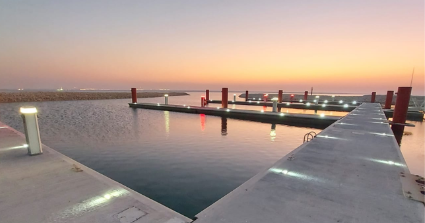Solid Slab vs. Hollow Block Slab: Uses, Advantages, and Disadvantages
Choosing the type of slab in residential and commercial projects is a crucial decision that impacts construction quality, cost, and execution speed. In Qatar and the region, two of the most commonly used structural systems are:
- Solid Slab
- Hollow Block Slab (Hordi)
In this article, we review the differences between these two systems in terms of structure, benefits, drawbacks, and their appropriate uses.
First: Solid Slab
What is it?
It consists of a fully reinforced concrete slab without voids, usually with a thickness ranging from 12 to 20 cm, depending on the required loads and spans.
Advantages:
- High load resistance
- Offers flexibility in architectural design, especially with irregular columns or openings
- Suitable for floors requiring better sound insulation
- Ideal for areas subjected to vibrations or heavy loads
Disadvantages:
- Heavier weight, requiring larger columns and foundations
- Higher consumption of concrete and steel
- More expensive to execute compared to hollow block slabs
Second: Hollow Block Slab (Hordi)
What is it?
It comprises a concrete slab poured over hollow blocks (typically polystyrene or lightweight concrete blocks), used to reduce weight without compromising structural strength, with concrete beams (joists) placed between the blocks.
Advantages:
- Lighter weight reduces the size of foundations and columns
- Good thermal and sound insulation due to the voids
- Can save on concrete and reinforcement steel in some cases
- Provides a flat ceiling, simplifying finishing work
Disadvantages:
- Not suitable for heavy loads or large spans without drop beams
- More prone to cracking if not executed properly
- Offers less architectural flexibility, especially for future modifications
Suitable Applications:
| Type | Best Suited For |
|---|---|
| Solid Slab | Multi-story buildings, heavy load areas, commercial and industrial projects |
| Hollow Block Slab | Villas, medium-load residential buildings, schools, and offices |
Which is Better?
Choosing between a solid and a hollow block slab depends on several factors:
- Project type
- Architectural design
- Available budget
- Load requirements
- Execution time
It’s always recommended to consult a qualified structural engineer to make the right decision based on detailed analysis.
Conclusion
Understanding the differences between slab types is essential for any engineer or contractor aiming to deliver high-quality and cost-effective projects. While solid slabs offer greater strength and durability, hollow block slabs provide lighter weight and better insulation.
There is no universally better system—each has its ideal use depending on the project’s needs.
At Qatar Contracting, we are committed to raising engineering awareness and sharing knowledge among professionals and enthusiasts in the construction sector. Stay tuned for the next article in our engineering series, where we highlight key elements for successful project execution based on best practices.
By: Eng. Mohammad Alayan Civil Engineer – Specialist in Project Management and Construction General .Manager, Al-Benaa Al-Mithaly Trading & Contracting





